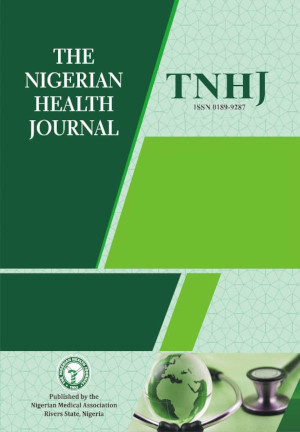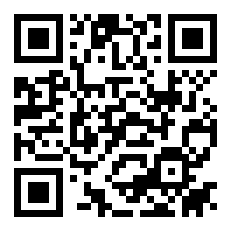Hindrances to the Effective Pedagogical Use of Innovative Technologies in the MacArthur Clinical Skills Laboratory at the University of Port Harcourt Medical School.
DOI:
https://doi.org/10.71637/tnhj.v25i1.874Keywords:
Clinical teachers, MacArthur clinical skills laboratory, Pedagogy, Attitudes, Medical school, Innovative technologies, University of Port HarcourtAbstract
Background: The 21st century has seen rapid advancements in pedagogical technologies in medical education. This study explores barriers to the effective use of innovative technologies in the MacArthur Clinical Skills Laboratory (MCSL) at the University of Port Harcourt Medical School.
Method: A mixed-methods descriptive cross-sectional design was employed, combining open-ended and closed-ended questionnaires to capture quantitative and qualitative data. The study targeted clinical teachers within the Faculty of Clinical Sciences using purposive sampling. A pilot study was conducted among 25 non-participants to assess the tool's face validity. Key variables considered included innovative technologies, teacher training, institutional policies, perceived relevance, time consumption, and support systems.
Results: Out of 128 clinical teachers, 90 participated, 48 males and 42 females, comprised of 23 professors and 51 senior lecturers. Major inhibiting factors were the lack of necessary institutional policies on the use of the laboratory (56.67%), inadequate training of clinical staff (53.3%),), and perceived irrelevance of the MCSL (25.56%). A thematic analysis showed various concepts that highlighted key concepts that explained hindrances to using the MCSL, such as “Resource and Infrastructure Issues”, “irrelevance of the MCSL”, “Lack of institutional policies and requirements”, and “inadequate training”.
Conclusion: University management should implement policies mandating the use of the MCSL, provide comprehensive training, upgrade the medical curriculum, and offer incentives to clinical teachers.
Downloads
References
1. Al-Elq AH. Medicine and clinical skills laboratories. Journal of Family and Community Medicine. 2007 May 1;14(2):59-63.
2. Scalese RJ, Obeso VT, Issenberg SB. Simulation technology for skills training and competency assessment in medical education. Journal of General Internal Medicine, 2008, 23(1), 46–49.
3. Ricotta DN, Richards JB, Atkins KM, et al. Self-Directed Learning in Medical Education: Training for a Lifetime of Discovery Teach Learn Med. 2022;34(5):530-540. doi:10.1080/10401334.2021.1938074
4. Wealthall S, Henning M.. What makes a competent clinical teacher? Canadian medical education journal, 2012, 3(2), 141–145.
5. Bugaj TJ, Nikendei C. Practical Clinical Training in Skills Labs: Theory and Practice. GMS J Med Educ. 2016;33(4):63. doi:10.3205/zma001062
6. AlHaqwi AI, Taha WS. Promoting excellence in teaching and learning in clinical education. Journal of Taibah University Medical Sciences. 2015 Mar 1;10(1):97-101.doi.org/10.1016/j.jtumed.2015.02.005
7. Isokariari OM, Fomsi EF. Awareness, Utilization, and Effectiveness of the Macarthur’s Foundation Clinical Skills Laboratory of the University of Port Harcourt Teaching Hospital. Int J Trend Sci Res Dev. 2023;7(2):265-271.
8. Akudo AH, Eberechukwu AS. Gender differences on medical students’ perception of peer tutoring learning strategy on clinical skills training at Macarthur Clinical Skills Laboratory (MCSL). Br J Educ. 2018;6(5):1-8
9. Hao J, Estrada J, Tropez-Sims S. The clinical skills laboratory: A cost-effective venue for teaching clinical skills to third-year medical students. Academic Medicine, 2002; 77(2): 152
10. Stark, P., F, F. Teaching Clinical Skills in Developing Countries: Are Clinical Skills Centres the Answer? Education for Health: Change in Learning & Practice, 2003; 16(3): 298–306.
11. Issenberg SB., McGaghie WC., Petrusa ER, Gordon, D. L., Scalese, R. J. Features and uses of high-fidelity medical simulations that lead to effective learning: A BEME systematic review., Medical Teacher, 2005; 27(1): 10–28
12. Rush S, Ooms A, Marks-Maran D, Firth T. Students perceptions of practice assessment in the skills laboratory: An evaluation study of OSCAs with immediate feedback. Nurse Educ Pract 2014; 14:627-34
13. In J. Introduction of a pilot study. Korean J Anesthesiol. 2017;70(6):601–605. doi:10.4097/kjae.2017.70.6.601
14. Braun V, Clarke V. Using thematic analysis in psychology. Qualitative Research in Psychology. 2006;3(2):77–101.
15. Kiger ME, Varpio L. Thematic analysis of qualitative data: AMEE Guide No. 131.Med Teach. 2020;42(8):846-854. doi:10.1080/0142159X.2020.1755030
16. Alkan F, Erdem E. The attitudes of student teachers towards educational technologies according to their status of receiving teaching application lessons. Procedia - Social and Behavioral Sciences, 2010; 2(2):2523–2527
17. Rogers EM. Diffusion of Innovations, 5th Edition (Google eBook). 2003, 576. https://books.google.com/books/about/Diffusion_of_Innovations_5th_Edition.html?id=9U1K5LjUOwEC
18. Zimmerman, J. Why Some Teachers Resist Change and What Principals Can Do About It: 2016; 90(3): 238–249.
19. Guskey TR, Kwang Suk Yoon, What Works in Professional Development? Phi Delta Kappan, 2009; 90(07): 495-500.
20. McInerney J, Druva R. Clinical educators' attitudes towards the use of technology in the clinical teaching environment. A mixed methods study. J Med Radiat Sci. 2019;66(2):72-80. doi:10.1002/jmrs.335
21. Kyndt E, Nabhani MB, Crescentini A, Gast I, Neelen M, Delnoij L, et al. Supporting the well-being of new university teachers through teacher professional development. 2022; 28:1-18 doi: 10.3389/fpsyg.2022.866000.
22. Akinmayowa JT, Kadiri PA. Stress among academic staff in a Nigerian university. Covenant Journal of Business and Social Science. 2014; 65(1): 73-91
23. Darley JM., Beniger JR. Diffusion of Energy-Conserving Innovations. Journal of Social Issues, 1981; 37(2): 150–171.
24. Bebi K, Chapman SJ, Marangoni G. et al. Poor use of clinical skills centres by trainee doctors. Bulletin of The Royal College of Surgeons of England 2016; 98(6):258-263. Doi: 10.1308/rcsbull.2016.258.
25. Davis FD, Bagozzi RP, Warshaw PR. User acceptance of computer technology: A comparison of two theoretical models. Management science. 1989 Aug;35(8):982-1003. https://doi.org/10.1287/mnsc.35.8.982
26. Aggarwal R, Darzi A. Simulation to enhance patient safety. Chest 2011;140: 854–858.
27. Madlala ST, Mvandaba AN. Experiences of nurse educators regarding the use of the clinical skills laboratory at the School of Nursing in the Free State province. Health SA. 2023; 28:2077. doi:10.4102/hsag.v28i0.2077.
28. Watson NT, Rogers KS, Watson KL, Liau-Hing Yep C. Integrating social justice-based conflict resolution into higher education settings: Faculty, staff, and student professional development through mediation training. Conflict Resolution Quarterly. 2019; 36: 251–262. https://doi.org/10.1002/crq.21233.
29. Henderson M, Selwyn N, Aston R. What works and why? Student perceptions of ‘useful’digital technology in university teaching and learning. Studies in higher education. 2017 Aug 3;42(8):1567-79. https://doi.org/10.1080/03075079.2015.1007946.
30. Onyekwelu RA. Enhancing the Quality of Secondary Education Through Professional Development of Teachers in Nigeria. British Journal of Multidisciplinary and Advanced Studies. 2024 Mar 1;5(1):194-205. doi: 10.37745/bjmas.2022.0438
31. Oluremi OF. Enhancing educational effectiveness in Nigeria through teacher's professional development. European Scientific Journal. 2013 Oct 1;9(28). doi: 10.19044/ESJ. 2013.V9N28P%P
32. Chue S. Professional learning communities for enhancing faculty development initiatives. Medical teacher. 2016 Dec 1;38(12):1288-.
33. Kumar EJS, Parameswari A, Manickam A, Purva M. Establishment of a simulation central: Challenges and solutions. Indian J Anapest. 2024;68(1):45-51. doi: 10.4103/ija.ija_1232_23
34. Okunade SK, Awosusi OE. The Japa syndrome and the migration of Nigerians to the United Kingdom: an empirical analysis. Comparative Migration Studies. 2023 Aug 18;11(1):27. doi: 10.1186/s40878-023-00351-2
35. Akinmayowa JT, Kadiri PA. Stress among academic staff in a Nigerian university. Covenant Journal of Business and Social Science. 2014, 65(1), 73-91
36. Naqvi WM, Sundus H, Mishra G, Muthukrishnan R, Kandakurti PK. AI in medical education curriculum: the future of healthcare learning. European journal of therapeutics. 2024 Jan 30;30(2):e23-5.
37. Suh A, Wagner C, Liu L. Enhancing user engagement through gamification. Journal of Computer Information Systems. 2018 Jul 3;58(3):204-13. doi.org/10.1080/08874417.2016.1229143
38. Ugboma EW, Awotua-Efebo, E. Erekosima I. Attitude of clinical teachers towards the use of innovative technology in teaching and learning in the University of Port Harcourt Medical School, South-South Nigeria. Asian Journal of Education and Training. 2024;10(1), 40–47.
39. Falletta, S. Evaluating Training Programs: The Four Levels. American Journal of Evaluation,1998, 19(2), 259–261. https://doi.org/10.1016/S1098-2140(99)80206-9
Published
Issue
Section
License
Copyright (c) 2025 Wananyo Enighe Ugboma, Ibi Erekosima

This work is licensed under a Creative Commons Attribution-NonCommercial-ShareAlike 4.0 International License.
The Journal is owned, published and copyrighted by the Nigerian Medical Association, River state Branch. The copyright of papers published are vested in the journal and the publisher. In line with our open access policy and the Creative Commons Attribution License policy authors are allowed to share their work with an acknowledgement of the work's authorship and initial publication in this journal.
This is an open access journal which means that all content is freely available without charge to the user or his/her institution. Users are allowed to read, download, copy, distribute, print, search, or link to the full texts of the articles in this journal without asking prior permission from the publisher or the author.
The use of general descriptive names, trade names, trademarks, and so forth in this publication, even if not specifically identified, does not imply that these names are not protected by the relevant laws and regulations. While the advice and information in this journal are believed to be true and accurate on the date of its going to press, neither the authors, the editors, nor the publisher can accept any legal responsibility for any errors or omissions that may be made. The publisher makes no warranty, express or implied, with respect to the material contained herein.
TNHJ also supports open access archiving of articles published in the journal after three months of publication. Authors are permitted and encouraged to post their work online (e.g, in institutional repositories or on their website) within the stated period, as it can lead to productive exchanges, as well as earlier and greater citation of published work (See The Effect of Open Access). All requests for permission for open access archiving outside this period should be sent to the editor via email to editor@tnhjph.com.





